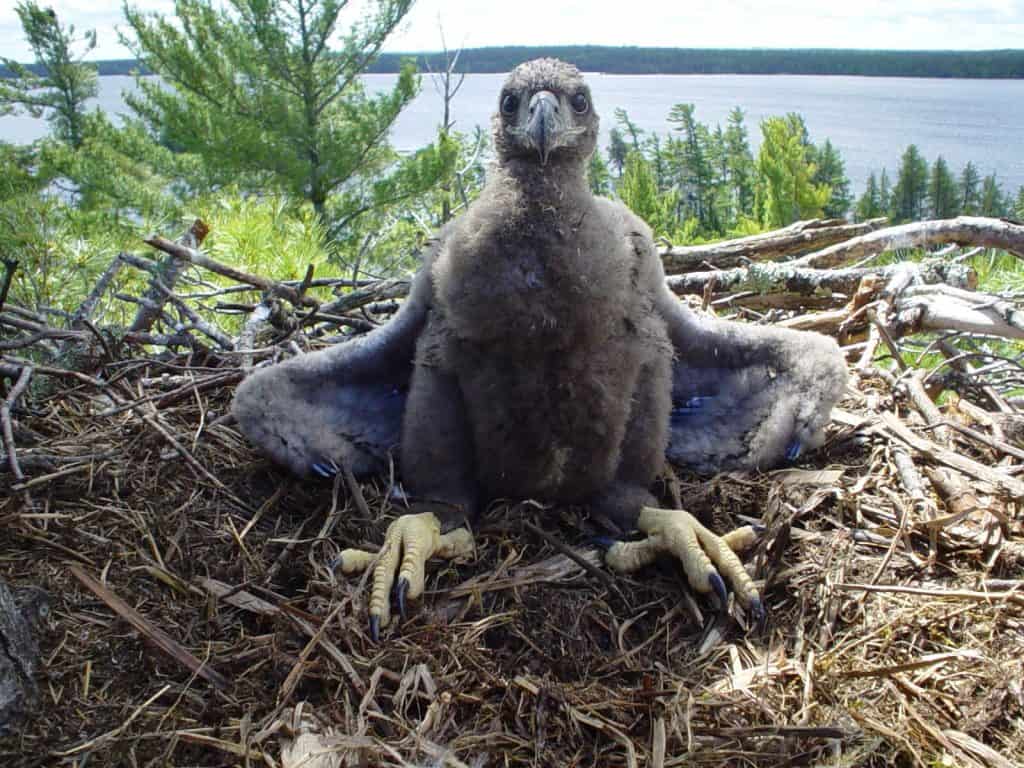
Every spring since 1991, Voyageurs National Park has closed small areas of the park to visitors to leave eagle nests alone. Biologists believed it was important to give the birds space to help them successfully raise their young, as eagles continue to recover from nearly being wiped out by humans in the 1960s.
New research says protecting the nests is working.
The National Park’s monitoring effort of eagle nests for more than 40 years, and its use of nest buffers since 1991, has provided valuable information for University of Wisconsin researchers. By analyzing the data, biologists could see how buffer zones around active eagle nests significantly increases reproductive success.
“Bald eagles and other sort of large raptors are very sensitive to human disturbance,” study author Ben Zuckerberg, an associate professor of wildlife ecology at UW–Madison, said recently on national public radio program Science Friday. “Even a camper, or a hiker, or certainly a motorized boat in the area will cause them to flush and in some cases abandon the nest.”
Buffer zones at Voyageurs restrict people during the spring nesting season from approaching within a certain distance. From 1991 to 2004, Voyageurs used an exclusion zone with a 400-yard radius, but from 2005 onward concluded that 200 yards was enough. The areas are posted with signs and notices at the park.
Bald eagle benefits
Ultimately, the researchers concluded that nest protection increased the number of breeding pairs at Voyageurs by 37 percent; other factors accounted for the rest of the increase.
“We asked a series of questions,” Zuckerberg said in a story from the University of Wisconsin. “If the nest is occupied, what is the chance they will have young? If they do have young, what is the chance that they have more than one? How is that different in managed versus unmanaged nests? Given the level of management that happens year to year, how did the population grow and how would that compare to the situation in the absence of management?”
Voyageurs National Park recently explained more about its bald eagle banding and monitoring program in a blog post:
Today those efforts to monitor and study the park’s eagles continue. In mid-June, eagle banding season began once again. Biologists and volunteers ventured out to nests all throughout the park, braving the angry parents circling above, to carefully place special bands on the legs of this year’s eaglets. While their feathers and bodies might have more growing to do, when they are five to six weeks old the chicks’ feet and talons are fully developed. Once banded, they are returned to the nest where their parents continue to care for them. Not long after banding, the eaglets will fledge and begin to fly and hunt for themselves.
The post also says banding allows biologists to track where eagles are born and where they travel, migration routes, their age, and which birds survived a winter.
Listen:
Stream the Science Friday segment about this research.

